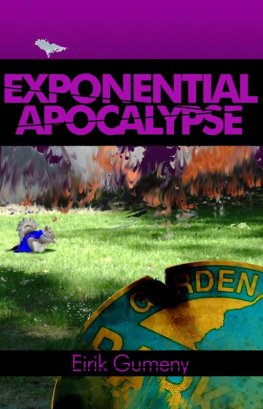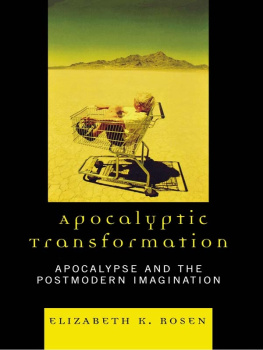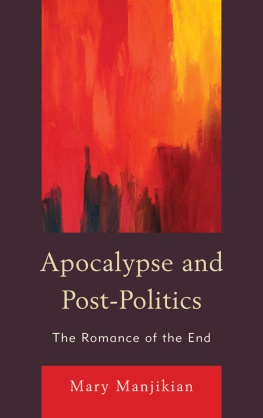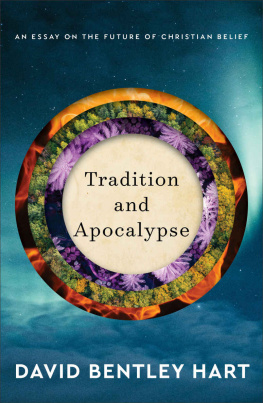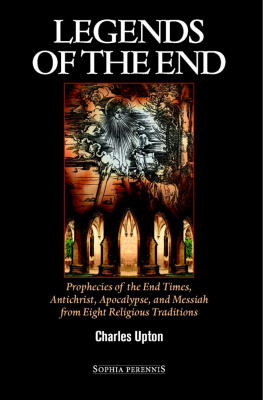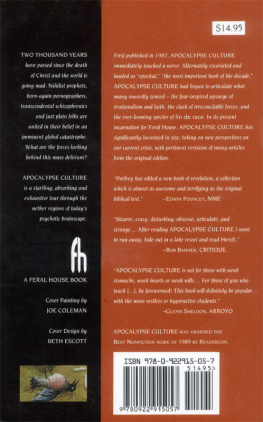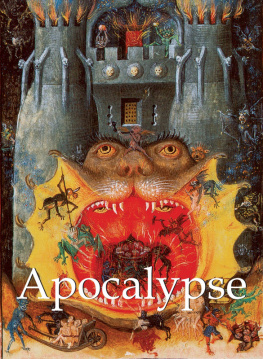The Apocalypse in Germany
Klaus Vondung
Translated from the German by Stephen D. Ricks
University of Missouri Press Columbia and London
1988 Deutscher Taschenbuch Verlag, Munich/Germany 2000 for the English language translation: Stephen D. Ricks 2000 for the English language edition by The Curators of the University of Missouri University of Missouri Press, Columbia, Missouri 65201 Printed and bound in the United States of America All rights reserved 5 4 3 2 1 04 03 02 01 00
Library of Congress Cataloging-in-Publication Data
Vondung, Klaus. [Apokalypse in Deutschland, English] The apocalypse in Germany / Klaus Vondung; translated from the German by Stephen D. Ricks. p. cm. Includes bibliographical references and index. ISBN 0-8262-1292-1 (alk. paper) 1. GermanyHistoryPhilosophy. 2. History (Theology) 3. NationalismGermanyHistory. 4. German literatureHistory and criticism. 5. Apocalyptic artGermany. I. Title.
DD97.V6613 2000 943'.001dc21
00-032558
This paper meets the requirements of the American National Standard for Permanence of Paper for Printed Library Materials, Z39.48, 1984.
Text design: Elizabeth K. Young Jacket design: Susan Ferber Typesetter: BOOKCOMP, Inc. Printer and binder: Thomson-Shore, Inc. Typefaces: Helvetica, Goudy Old Style
Frontispiece: Ludwig Meidner, Apocalyptic Landscape I (1912), Ludwig Meidner-Archiv, Jdisches Museum der Stadt, Frankfurt am Main, 2000.
This book is published with the generous assistance of the Eric Voegelin Institute in Baton Rouge, Louisiana.
Contents List of Illustrations
| Introduction
| Part One: Approaches
| 1. How Exciting the Vision of the New World Is!
Or, What Ernst Toller Connects with John of Patmos
| 2. Is the New Jerusalem a Utopia?
| 3. Can the Apocalypse Be Secularized?
| 4. Symbols and Experiences
| Part Two: The Apocalyptic View of History
| A. Structures
| 5. History Has No Meaning; Therefore, It Must Be Destroyed
| 6. History Must Have Meaning, So Meaning Is Created
| 7. World History Is the Last Judgment
| B. Movements
| 8. The Birth of Nationalism from the Spirit of the Apocalypse
| 9. From Holy Spirit to National Spirit
| 10. Protest and Futility
| 11. Our Army and Navy Are Also a Spiritual Power:
The Apocalypse of 1914
| 12. An EpilogueGerman Spirit: Sieg Heil!
| 13. The Spirit of Utopia
| Part Three: Aesthetics of the Apocalypse
| C. Forms
| 14. Images: Torrents of Mud and Crystal
| 15. Style: Dramatic
| 16. Rhetoric: Consolation and Agitation
|
|
|
D. Representations
| 17. Dreams of Death and Destruction
| 18. If War Came! Oh, for Something Higher ...:
Visions of the New Man
| 19. Shaping the Shapeless
| 20. Paradise Is Won in Every Form: Redemption through Art
| 21. Surrender of the Imagination?
| Part Four: The Existential Apocalypse
| 22. Transformation and Revolt
| 23. Lust for Power and the Spirit of Sacrifice
| 24. The Last and the First
| Bibliography
| Index
|
|
|
Illustrations
| Ludwig Meidner, Apocalyptic Landscape I frontispiece A Scheme of the Lives of the Patriarchs from Adam to Moses |
| Lucas Cranach the Elder/Atelier, The Babylonian Whore |
| A W, The Assault of Gog and Magog on the Beloved City |
| Johnson, The New Phoenix |
| Max Beckmann, Scene from the Destruction of Messina |
| Max Beckmann, The Sinking of the Titanic |
| Franz von Stuck, War |
| Arnold Bcklin, War |
| Alfred Kubin, War |
| Ludwig Meidner, Horrors of War |
| Ludwig Meidner, Vision of a Trench |
| George Grosz, Authorities |
| Elk Eber, The Last Hand Grenade |
-vii-
[This page intentionally left blank.] |
|
Introduction
The apocalypse is omnipresent. No one can fail to recognize that the apocalyptic fears of the last decades have receded only momentarily with the disintegration of the communist regimes and the Soviet Union, and with the independence achieved by the Eastern European states. Only for a short time did it appear that a new, peaceful world order would be possible. Meanwhile there are more trouble spots than ever before, as thoughparadoxicallythe previous balance of terror would have taken care of peace and stability. Since 1989 death and destruction have been the daily fare of news reports on television: in Kuwait and Iraq, in Somalia and Rwanda, in the former Yugoslavia, and in the Caucasus. The desolate situation of the successor states of the Soviet Union may hold even greater terrors.
Ever since the bombing of Hiroshima, the destruction of mankind through war has become not only imaginable, but also possible. As early as the fifties and sixties, there were individuals who warned of the apocalyptic danger of a nuclear war, for instance, Gnther Anders, who used this expression as early as 1959. But it was a while before everybody became aware of this danger. The possibility that mankind could destroy itself had become obvious in the seventies and eighties with the nuclear arms race between the superpowers and in view of the SS 20 and Pershing-2 missiles that were threateningly directed against each other. The disarmament of the medium-range missiles and, above all, the collapse of the Soviet Union made the fear of a nuclear war recede but not disappear: the future of the successor states of the Soviet Union and of their nuclear potential is still too uncertain, while too many other states are attempting to obtain nuclear weapons or already possess them.
As if the danger that results from nuclear weapons for mankind were not bad enoughmeanwhile another danger appears even larger and less avoidable: the self-destruction of mankind by the elimination of the bases of life. Indeed, even earlier critics of modern technological civilization warned about its dangerous effects, long before the Club of Rome, the
____________________
| 1. | Gnther Anders, Thesen zum Atomzeitalter, in Die atomare Drohung: Radikale berlegungen, 95. |
-1-
Cousteau Society, Greenpeace, and the Greens, but the deadly seriousness of the situation was perceived only when the destruction of forests and the increasing poisoning of rivers and seas came to everyone's attention. Meanwhile, ecological disasters began to amass, warning us ever more clearly of the prospect of an uninhabitable world. The nuclear reactor disaster at Chernobyl has made us all acquainted with the incalculable dangers of even the peaceful use of atomic energy. Since then we have heard again and again of irregularities and breakdowns in nuclear reactors. Reports have multiplied about accidents in chemical works that poison our rivers, about crippled oil tankers that pollute the seas, and even about criminal actions. Scandals about the dumping of extremely radioactive or dangerous chemical wastes show again and again what a deadly threat we have made for ourselves and how poorly we deal with it. The daily poisoning of our atmosphere continues to increase. The hole in the ozone layer is growing, and the sun, the greatest life-giving power, is increasingly associated with cancer. The exploitation of natural resources continues. The world's human population is exploding. With all of this, the end of mankind appears to be near.



